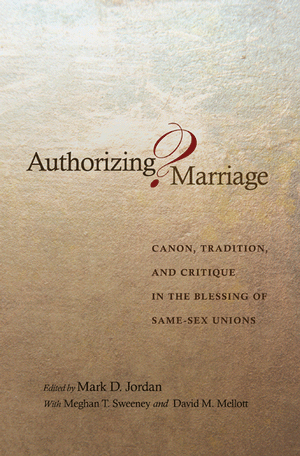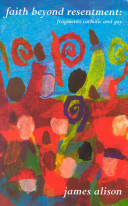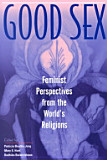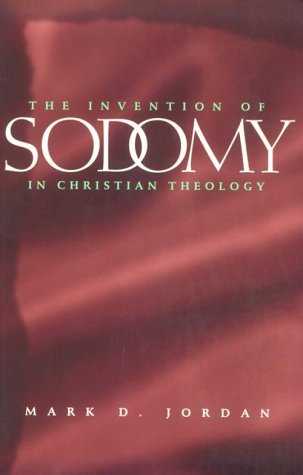Though the material for this project was introduced primarily through Summer Academy and assigned readings, we must return to GLBT Week 2006 as the beginning place of a shift that has taken place in my thought. I am not sure that I had ever heard the term "heterosexism" before Mary Hunt introduced it in her lecture entitled "Feminist Theo-ethics: queering imagination and action." But as I made preparations for the new LTS Allies website and digitized the available lectures given at previous GLBT Week celebrations, I found "heterosexism" to be a term that had also emerged in the language of Christine Smith and Virginia Ramey Mollenkott in preceding years. Patricia Beattie Jung and Ralph F. Smith define heterosexism as "a reasoned system of bias regarding sexual orientation which denotes prejudice in favor (privilege) of heterosexual people and prejudice against bisexual and particularly homosexual people" in matters of law, economics, politics, custom, ethics, religious life and commerce (13, 14). These authors are very careful to distinguish between homophobia – an unreasoned and irrational fear/hatred of homosexuals – and heterosexism, which implies no fear at all, but instead the privilege afforded to perceived heterosexuals over their queer neighbors. Within the discourse of the LTS community we have made a point of strongly urging people to speak of heterosexism rather than homophobia. [Instructor Comment: I hope many hear this message!]
Category: LGBT Responses to Christian Tradition & Scripture
Materials produced for an independent study course. The first part of the course was participation in a Summer Academy course entitled "From Heterosexism to Sexual Diversity," taught by Mary Hunt of WATER. This was followed during the regular school year by readings and one-on-one discussions with the instructor.
Reflections on Authorizing Marriage?
In the volume Authorizing Marriage?: canon, tradition, and critique in the blessing of same-sex unions, authors from the Jewish and Christian perspectives were asked to reflect on a set of questions regarding voices within the Judeo-Christian canon which may speak to questions of same-sex relations (including erotic union), bases for justifying same-sex unions from scripture, liturgical practice and religious law, and the possible ways of using exegesis and theological reflection to legitimate any new same-sex constructs (Jordan 1). The authors approach their work from several points of view: biblical interpretation, Greek philosophical influences within Rabbinic Judaism and Christianity, liturgical rites associated with marriage, and theological assessments of current discourse surrounding same-sex relationships (Jordan 1-2). What follows are a few reflections sparked by the essays in this volume.
Reflections on Faith Beyond Resentment
Of all the material that I have read for this independent study, I have found Faith Beyond Resentment: fragments Catholic and gay to be the most thought-provoking.[1] I am not sure whether this is because of my own lack of familiarity with Catholic theology or perhaps because so much of what Alison has to say is fresh and new. Based on the responses that I have seen from accomplished theologians and people much more familiar with Catholic theology, I am inclined to believe he has added something new to the conversation by applying Girard’s theories to the gay question within Catholic discourse. However, Alison’s insights are not narrowly related to LGBT issues only, but rather can be adapted to larger questions of group dynamics within the Church and personal identity in a life of faith. In the paper I will reflect on a few key insights from the text that have helped me to review certain events in my own life from a different point of view.
Reflections on Good Sex
The essays in the compilation Good Sex: Feminist Perspectives from the World’s Religions include the views of several Jewish and Christian feminist scholars. Though not all of the authors identify as lesbian, they share similar views and concerns. It is interesting to note that in many ways their unity is found more in their shared gender identity than in their sexual preferences. This is the first feature of these essays that I found striking: there is no analogous "masculist" movement nor a shared set of concerns among gay and straight men that would provide an overarching backdrop in a male-oriented conversation. However, as I reflect on this a possible explanation appears to be that women, whether gay or straight, are able to identify with each other’s oppression within our framework of power dynamics. Straight men, who most often occupy the position of privilege in our society, are less apt to identify with the oppression faced by gay men, as to do so could result in a loss of privilege.
Reflections on The Invention of Sodomy
In The Invention of Sodomy Mark Jordan traces the roots of the term Sodomy from its first appearance in the Middle Ages through a complex evolution witnessed in various religious texts over three centuries. Jordan begins his work by asserting that "the category ‘Sodomy’ [is] problematic no matter where or how it is used" (6). Based on the context provided by each of the texts selected, we find quickly that the meaning of the word Sodomy varies widely.



